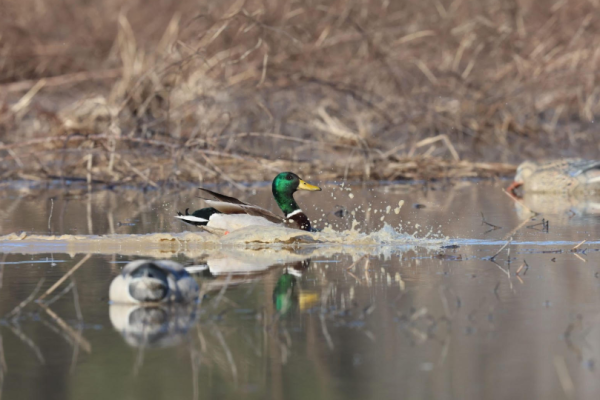|
“Long-term data collected since 1995 has shown both higher and lower pond counts and population estimates and the liberal framework of 60-day seasons have been in place throughout that time,” Arkansas Game and Fish Commission Waterfowl Program Coordinator Brett Leach said.
According to USFWS reports, this year’s mallard estimate is very similar to the 6.75 million-bird estimate in 2005. That year still saw liberal frameworks, and the population still increased dramatically in the next few years, following favorable conditions on the breeding grounds.
“Hunter harvest can play a role in overall populations, but it’s not as large of a factor as habitat on the breeding grounds during nesting season,” Leach said. “Shorter seasons and smaller bag limits in modern hunting frameworks can help when populations are at critical levels, but supporting wetland habitat where it counts far outweighs any small reductions in hunting mortality modified seasons may offer.”
“It’s also important to keep in mind that many other factors come into play throughout Arkansas’s duck season, and these numbers do not necessarily indicate a ‘good’ or ‘bad’ hunting season,” Luke Naylor, Arkansas Game and Fish Commission Chief of Wildlife Management, said. “The driving factors for duck abundance in Arkansas are the timing and amount of flooded habitat on the state’s landscape and the timing of freezing temperatures and weather events in states north of us in the Mississippi Flyway.”
Naylor also warns hunters to enter into the 2025-26 hunting seasons with a bit of perspective on the total population. Mallards are still 17 percent below their long-term average population, and nearly half of the population counted during 2015, when observers estimated a record 11.6 million mallards.
“This shouldn’t be taken as gloom and doom, but some hunters have memories of the early 2000s and again in the 2010s, when those record-high duck populations were nearly twice what they are today,” Naylor said. “We’ve seen higher duck population and pond counts than this year’s reports, but we’ve also seen worse, and the ducks rebounded when habitat conditions were favorable.
“Given the best science available, duck populations are still sufficient to support continued liberal seasons,” Naylor added. “But the fact remains that mallard population estimates are half what they were only a decade ago. No doubt hunters will feel those impacts and likely see fewer ducks.”
|
